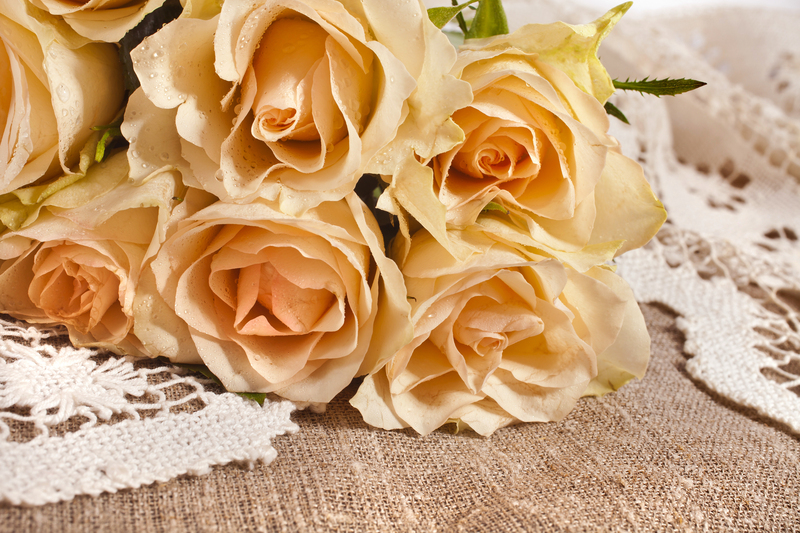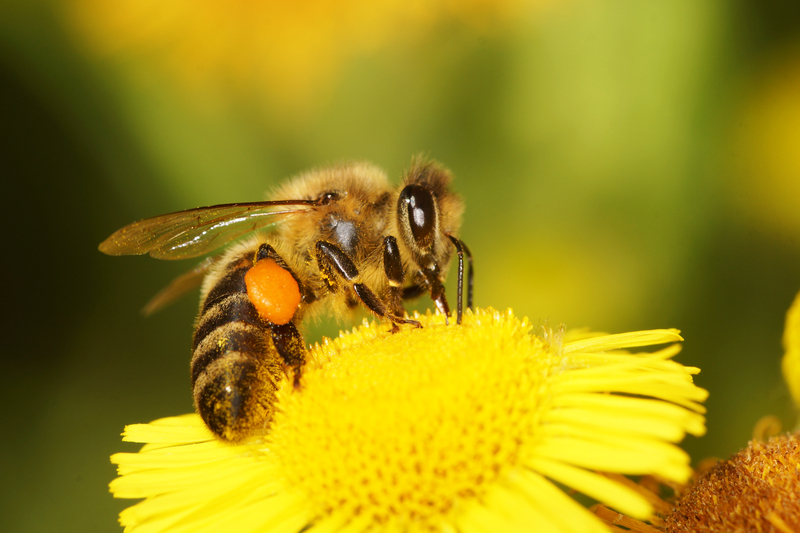Discover the Art of Container Gardening
Posted on 03/07/2025
Discover the Art of Container Gardening
Are you dreaming of a lush, vibrant garden but lack the space or time for a traditional one? Container gardening is the answer! Whether you live in a bustling city apartment, cozy cottage, or a large suburban home, container gardening is a flexible, creative, and rewarding way to bring color, freshness, and even homegrown produce into your life.
What is Container Gardening?
Container gardening is the practice of growing plants--including flowers, herbs, vegetables, and even small trees--in pots, planters, or other containers instead of directly in the ground. This method allows gardeners with limited space or poor soil to still enjoy the beauty and benefits of gardening. It's also perfect for those who want to experiment with plant design and arrangement.

Benefits of Container Gardening
- Versatility: Grow a garden on balconies, rooftops, patios, windowsills, or indoors.
- Mobility: Move containers to adjust sunlight, protect from weather, or simply change the landscape design.
- Design Creativity: Mix and match plants, colors, sizes, and shapes for a personalized look.
- Simplified Maintenance: Manage soil, water, and pests more easily in a contained environment.
- Accessibility: Easier on the back and knees; ideal for gardeners of all ages and abilities.
Why Choose Container Gardening?
Homeowners and renters alike love the convenience and creative possibility that container planting offers. A vibrant pot of flowers by your front door, a collection of herbs in your kitchen window, or even a vertical vegetable garden on your balcony are all possible and easy to create. Container gardens bring greenery to small or paved spaces, and their mobility allows you to adapt to changing seasons or tastes.
Choosing the Perfect Containers
The foundation of any container garden is, of course, the container itself. There are countless options with their own advantages and design aesthetics:
- Clay and Terra Cotta: Classic and attractive, these offer excellent breathability but can dry out quickly.
- Plastic: Lightweight, affordable, and come in a wide range of colors and styles. They retain moisture well, but may fade over time.
- Ceramic and Glazed Pots: Often beautiful and decorative, they are heavier and provide insulation for plant roots.
- Metal: Modern and stylish, but can heat up dramatically in sunshine--better for shade-loving plants.
- Wood: Natural and rustic; be sure it's treated to resist rot, or use liners.
- Repurposed Items: From old watering cans to baskets and boots, almost anything can serve as a unique garden container.
Container Size and Drainage
Size matters when it comes to successful potted gardening. Larger containers offer more room for roots to grow, retain moisture longer, and allow you to create miniature landscapes by combining plants. Additionally, adequate drainage is non-negotiable. Always ensure your pot has drainage holes to prevent root rot and overwatering issues.
Soil and Fertilization Essentials
Standard garden soil isn't suitable for container cultivation--it's too heavy and may contain pests or weed seeds. Instead, use a high-quality potting mix that is light, sterile, and designed to retain moisture while still allowing for drainage. For most plants, a blend containing peat moss, vermiculite, perlite, or compost works well.
Fertilization is vital for healthy plants. Since nutrients wash out of pots with watering, consider a slow-release fertilizer mixed into the soil or regular feeding with a liquid fertilizer designed for your chosen plants--whether vegetables, flowers, or herbs.
Selecting Plants for Your Container Garden
The possibilities are virtually endless when it comes to growing plants in containers, but it pays to plan ahead. Start by considering the following factors:
- Sunlight: Know how many hours of sunlight your location receives and choose plants accordingly. Most vegetables need at least 6 hours of direct sun.
- Space: Select compact, dwarf, or trailing varieties to prevent overcrowding.
- Water Needs: Group together plants with similar water requirements for easier care.
- Design: Mix heights, textures, and colors for visual interest and balance.
Popular Plants for Container Gardens
- Herbs: Basil, thyme, chives, mint, rosemary.
- Vegetables: Cherry tomatoes, peppers, lettuce, spinach, radishes, beans.
- Flowers: Petunias, geraniums, pansies, marigolds, begonias, impatiens.
- Succulents and Cacti: Require minimal water and are great for sunny spots.
- Foliage Plants: Ferns, hostas, ornamental grasses for dramatic leaves and textures.
Designing Your Perfect Container Garden
The artistry of potted gardening lies in how you combine plants and arrange your containers:
Thriller, Filler, Spiller Technique
- Thriller: A tall, eye-catching plant like a spike or ornamental grass placed in the center or back of the container.
- Filler: Mid-sized, bushy plants (like petunias or coleus) that fill out the arrangement's middle ground.
- Spiller: Trailing plants (such as ivy or sweet potato vine) that cascade over the pot's edge, softening the look.
Experiment with color schemes, foliage contrasts, and seasonal interest by mixing annuals, perennials, and even edible plants in elegant ways. Containers of various heights and materials can be grouped for added impact and visual harmony.
Edible Container Gardening
Growing your own food in containers is one of the most satisfying types of gardening. Tomatoes, peppers, lettuce, radishes, and a variety of culinary herbs thrive in pots, while strawberries and dwarf fruit trees add sweetness to your patio or balcony. Use deep containers for root crops, and ensure regular watering as vegetables are particularly thirsty.
Caring for Your Container Garden
Container plant care is a bit different from in-ground gardening, but with a few simple routines, your plants will flourish:
- Watering: Pots dry out faster; check daily in hot weather. Use self-watering pots or mulch the surface to retain moisture.
- Fertilizing: Feed regularly, as nutrients leach out more quickly from containers.
- Pruning and Deadheading: Remove spent blooms and prune plants to encourage growth and keep them looking tidy.
- Monitoring Pests: Inspect plants for problems often--since containers are elevated and isolated, pests and diseases are usually easier to spot and manage.
- Seasonal Care: Protect tender or perennial plants by moving pots indoors or mulching in colder climates.
DIY Project: Building a Simple Container Garden
Ready to begin your container gardening adventure? Here's a quick step-by-step guide:
- Pick a container with drainage holes.
- Fill with a high-quality potting mix (leave space at the top for watering).
- Choose your plants and plan your arrangement--thiller, filler, spiller if you like.
- Remove plants from nursery pots, gently loosen roots, and position in the container.
- Fill gaps with soil, pressing gently; water thoroughly to settle everything in.
- Place the container in its final spot and enjoy!
Pro tip: For larger containers, line the bottom with an inch or two of gravel or non-biodegradable packing peanuts (keep above the drainage hole) to promote good drainage and reduce weight.
Common Challenges and How to Overcome Them
Like any gardening method, container planting comes with a few challenges, but they're easy to manage with some planning and care:
- Poor Drainage: Always ensure your containers have drainage holes. Use well-draining soil, and never let pots sit in standing water.
- Rapid Drying: Especially in sunny, windy locations. Mulch the surface, choose larger pots, and group containers together to retain humidity.
- Stunted Growth: If plants stop growing, check for rootbound conditions and repot if necessary.
- Pest Problems: Keep containers clean, use organic pest control, and isolate affected plants if needed.
Sustainable and Eco-Friendly Container Gardening
Sustainability is increasingly important in the modern garden. Embrace eco-friendly techniques such as:
- Upcycling: Repurpose old or broken containers.
- Organic Practices: Use organic potting soils and fertilizers.
- Water Conservation: Install drip watering systems or collect rainwater.
- Natural Pest Management: Encourage beneficial insects and avoid chemical pesticides.

Frequently Asked Questions about Container Gardening
How often do I need to water my containers?
It depends on the weather and plant type, but check soil moisture daily during hot seasons. Most containers require watering at least once per day in summer. Always water until liquid runs from the drainage holes.
What size container should I use?
Bigger is usually better! Larger pots retain moisture longer and offer roots more space. For vegetables and larger flowers, choose at least a 12-18 inch wide pot.
Can I grow perennials in pots?
Absolutely. Just remember that perennials in containers may need extra winter protection or moving indoors depending on your climate.
Do containers need special soil?
Yes. Always use a high-quality potting mix--never garden soil--as it will ensure better drainage, aeration, and plant health.
How can I keep my containers looking good all year?
Switch out annuals seasonally, add evergreens or hardy plants for winter interest, and refresh soil nutrients regularly.
Start Your Container Gardening Journey Today
Embracing the art of container gardening means inviting beauty, productivity, and creativity into your home--no matter your space or experience level. With the information in this guide, anyone can cultivate thriving container gardens that delight the senses and nourish the soul.
What will you grow in your first pot? The possibilities are as limitless as your imagination. So grab some pots, choose your plants, and discover the joy and satisfaction of container gardening today!
About the Author:
An avid gardener and plant enthusiast, the author has spent years exploring every nook and cranny of the container planting world. From tiny studio balconies to sprawling backyard patios, their mission is to help everyone discover the art of container gardening--one pot at a time.

